Ashburn
Ten miles southwest of the loop, Ashburn was home to Chicago’s first airport. Ashburn Flying Field opened in 1916 in what was then a rural area. It served as a training camp for the U.S. Army’s Signal Corps during World War I. Ashburn Flying Field closed in 1939.
Meanwhile, another airfield had come to Ashburn. In 1923, Chicago Air Park began operation, dedicated primarily to airmail service. It would later be renamed Chicago Midway International Airport.
Even with over 89,000 departing flights and 20 million passengers a year (as of 2015), Midway is still a far second to another Chicago airport: the extremely busy O’Hare International Airport, which serves almost 60 million passengers and 377,800 departures each year.
In addition to airfields, in the first half of the 20th century, Ashburn became home to various types of industry, including a storied industrial complex that has produced, in order: engines for World War II B-29 bombers; Tucker automobiles; and finally, Tootsie rolls. Part of the former factory complex today houses the Ford City Mall.
The Ashburn area is also notable for its connection to the large Chicago Lithuanian community, including the Balzekas Museum, which promotes Lithuanian culture.
It wasn’t until after World War II that Ashburn boomed into a dense suburban community. Today, Ashburn has a diverse population of about 40,000 residents.
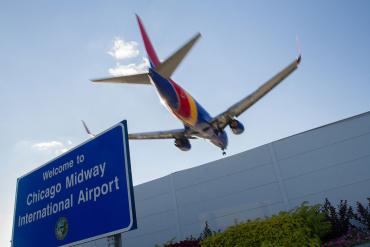
Just north of Ashburn, Chicago Midway International Airport at 5700 South Cicero Avenue serves 89,000 departures and 20 million passengers a year – over 90% of them on Southwest Airlines. It opened in 1923 as Chicago Air Park.
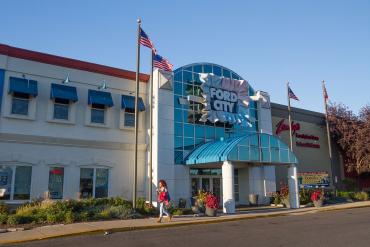
The Ford City Mall at 7601 South Cicero Avenue sits on the site of a storied industrial complex that produced, at various times, engines for World War II B-29 bombers; Tucker automobiles; and Tootsie Rolls.
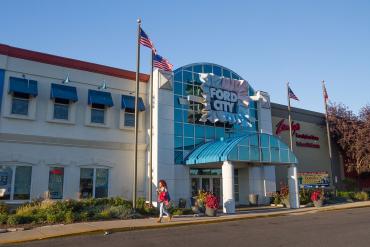
The Balzekas Museum, at 2600 South Pulaski Road, is the only museum in North America dedicated to Lithuanian history and culture.
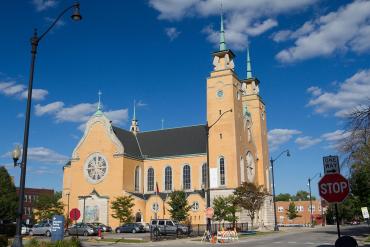
Nativity of the Blessed Virgin Mary Catholic Church , at 6812 South Washtenaw Avenue, conducts mass in English and Lithuanian.

In nearby Marquette Park stands a memorial to two Lithuanian-American pilots who, in 1933, attempted to beat Charles Lindbergh’s 1927 distance record for transatlantic flight. Steponus Darius and Stasys Girenas’ plane crashed northeast of Berlin, 650 kilometers shy of their goal. Also in Marquette Park, Martin Luther King, Jr. was struck by a rock while marching in the summer of 1966. “I have to do this – to expose myself – to bring this hate into the open,” he later explained.
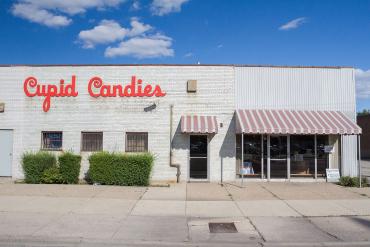
Cupid Candies, at 7637 South Western Avenue, was chosen to make Frango Mints for Macy’s in Chicago. Macy’s, which had purchased Marshall Field’s, agreed to bring some Frango Mint production back to Chicago in 2007 after pressure from Mayor Richard M. Daley.
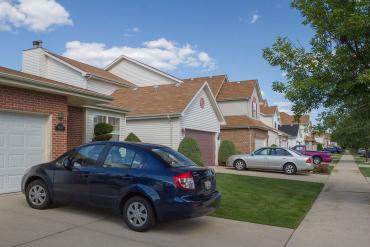
While most of Ashburn was developed in the mid-twentieth century, the Marycrest Place neighborhood, near 87th Street and Kedzie Avenue, was constructed on 22 acres of undeveloped land in the 1990s, giving it a suburban feel not often encountered inside the Chicago city limits. Marycrest Place sits on land once owned (but never used) by Evergreen Park Cemetery.


